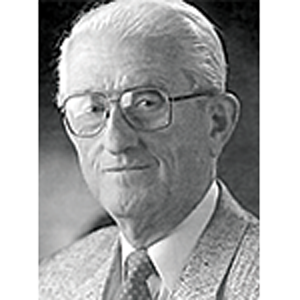 Larry Gladstone was born in 1922 in Vysna Kamenica, Slovakia and moved to Munkacs at the age of seven. He was 16 years old when World War II began. In 1943, Larry was drafted into a Hungarian labor battalion (slave labor) and for a time dug ditches in the Carpathian Mountains for military communication cables. In early 1944, his battalion was moved to Dolina, in southern Poland, and then back to northern Hungary in the fall of 1944 to the town of Balf. Larry and most of his comrades contracted typhus here, and many died from lack of food and medical attention.
Larry Gladstone was born in 1922 in Vysna Kamenica, Slovakia and moved to Munkacs at the age of seven. He was 16 years old when World War II began. In 1943, Larry was drafted into a Hungarian labor battalion (slave labor) and for a time dug ditches in the Carpathian Mountains for military communication cables. In early 1944, his battalion was moved to Dolina, in southern Poland, and then back to northern Hungary in the fall of 1944 to the town of Balf. Larry and most of his comrades contracted typhus here, and many died from lack of food and medical attention.
With the advance of the Soviet Army in early 1945, Larry was forced to endure his first death march, approximately 150 miles to Mauthausen, Austria. He stayed there one month and then was forced on a second death march to Gunskirchen. Suffering from starvation and illness, Larry and his fellow prisoners scavenged for anything edible, including grass and earthworms, to survive. He remained there until May 5, 1945, when the camp was liberated by the U.S. 3rd Army under General Patton. After liberation, Larry found out that his father and younger sister, Clara, were killed in Auschwitz. His sister, Edith, survived and was liberated from Bergen-Belsen.
In June 1945, Larry returned to Prague, registered at Charles University and worked in a reparation camp until 1946, when he was able to come to El Paso with help from relatives living there. Larry attended the College of Mines (now The University of Texas at El Paso) and then attended the Southwestern Medical School in Dallas from 1948 to 1953. He married Beatrice Marcus from Dallas in 1953, and they had three children. He opened a private practice in El Paso with Dr. Walter Feinberg in 1958, and while practicing medicine served jointly with Dr. Richard Harris as Medical Director at Sierra-Providence Health Network from 1992 to 2004. He retired in 2004. Larry also served on the advisory board of El Paso Holocaust Museum and Study Center. Larry died on June 4, 2010 at the age of 87.